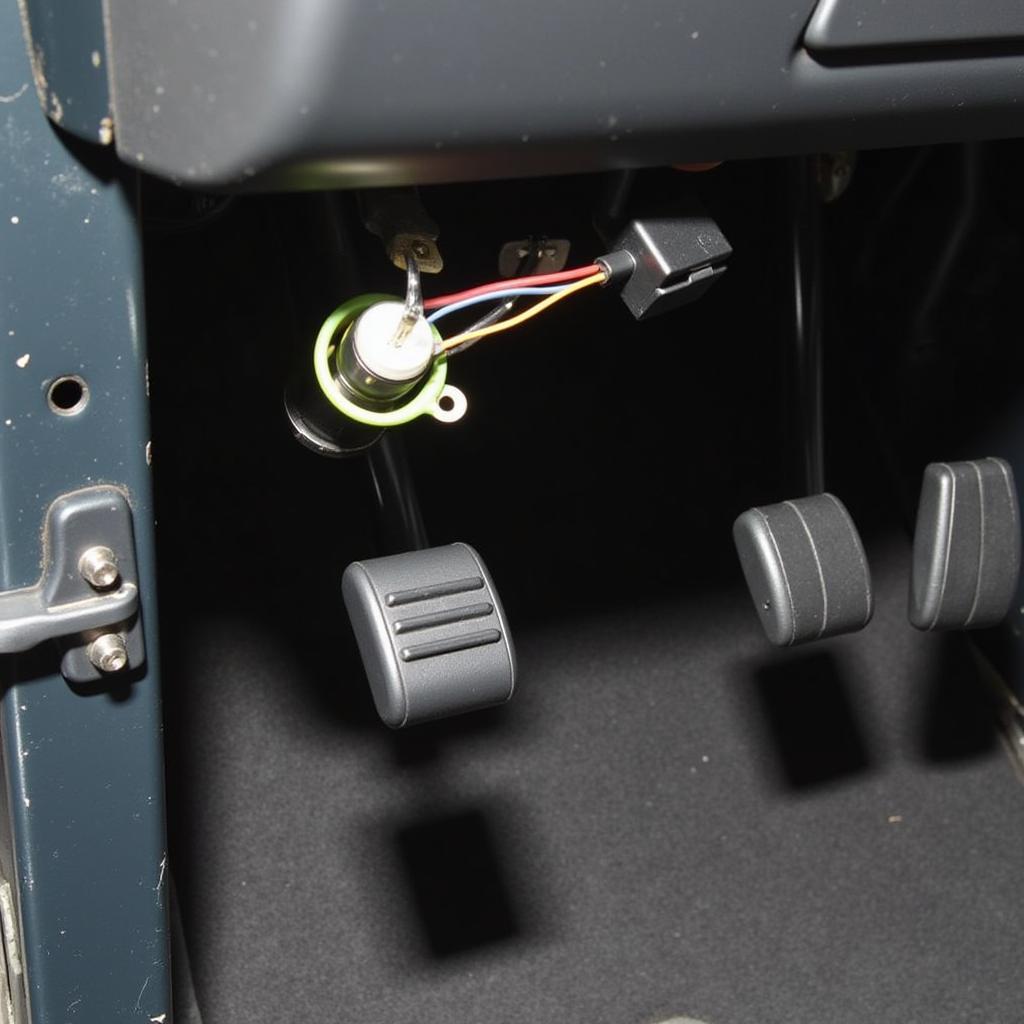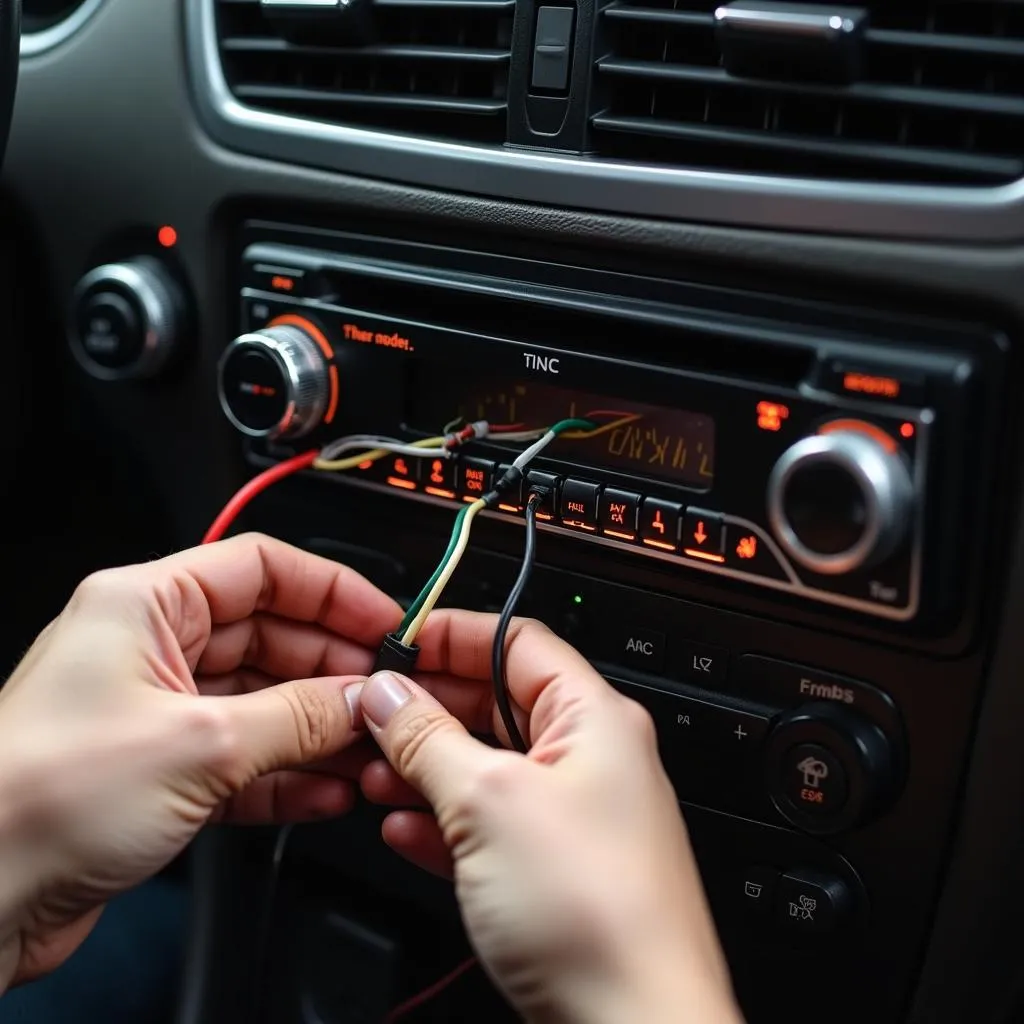Troubleshooting brake issues in your 2003 Jeep Wrangler often leads to the brake warning switch. This small but crucial component plays a vital role in activating your brake lights and often triggers the ABS system if it detects a fault. Locating it can seem daunting for a novice mechanic, but with a little guidance, it’s a straightforward process.
Understanding Your Jeep’s Brake Warning Switch
Before diving under the hood, it’s helpful to understand what you’re looking for. The brake warning switch, sometimes called the “brake light switch,” is a simple on/off switch activated when you press the brake pedal.
Here’s how it works:
- Off: When the brake pedal is released, the switch remains open, preventing the flow of electricity. Your brake lights stay off.
- On: Pressing the pedal depresses the switch, closing the circuit. This sends power to your brake lights, signaling to other drivers that you are slowing down.
Locating the Brake Warning Switch in a 2003 Jeep Wrangler
In a 2003 Jeep Wrangler, the brake warning switch is conveniently located above the brake pedal, directly beneath the dashboard on the driver’s side. This makes it easily accessible without the need for specialized tools.
 2003 Jeep Wrangler Brake Warning Switch Location
2003 Jeep Wrangler Brake Warning Switch Location
Here’s a step-by-step guide:
- Safety First: Begin by disconnecting the negative battery cable to prevent any electrical mishaps.
- Get Comfortable: Position yourself under the dashboard on the driver’s side. You might need a flashlight for better visibility.
- Locate the Pedal: Identify the brake pedal arm and follow it upward to where it connects to the brake pedal assembly under the dashboard.
- Spot the Switch: The brake warning switch is a small, typically black, plastic or metal cylinder with a plunger or button on one end and an electrical connector on the other. It is mounted on the brake pedal assembly and is activated when the brake pedal is pressed.
Common Symptoms of a Faulty Brake Warning Switch
A malfunctioning brake warning switch can manifest in several ways:
- Brake lights stay on constantly.
- Brake lights don’t turn on at all.
- The ABS warning light on your dashboard is illuminated.
- You experience shifting problems with your automatic transmission.
“A faulty brake light switch is a common culprit when diagnosing brake light issues,” says John Smith, a senior automotive electrician with over 20 years of experience. “It’s often a simple fix that can save you a lot of trouble down the road.”
Beyond Location: What Next?
Once you’ve located the brake warning switch, you can proceed to inspect it for damage, adjust its positioning if needed, or replace it entirely. If you are uncomfortable performing these tasks yourself, it’s always best to consult a qualified mechanic.
Remember, maintaining your vehicle’s braking system is crucial for your safety and the safety of others on the road. Regular checks and timely repairs can prevent accidents and ensure your peace of mind behind the wheel.


